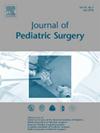Endoscopic implantation of a biodegradable tracheal stent: Toward pediatric applications in airway surgery — A preclinical study
IF 2.5
2区 医学
Q1 PEDIATRICS
引用次数: 0
Abstract
Background
Obstructions of the tracheobronchial tree can result from various etiologies. Most cases of tracheal stenosis or tracheomalacia are associated with patient-specific anatomical and functional abnormalities, making treatment challenging. Despite progress in the development of tracheal support devices, the optimal or near-optimal stent design remains elusive.
Methods
A multidisciplinary team developed a novel endoscopically implantable tracheal stent using three-dimensional (3D)-printed bioabsorbable polymer caprolactone. The stents were implanted into the trachea of 6 healthy adult male Texel sheep and after 8 weeks the animals were euthanized. Clinical, endoscopic, and histopathological findings were analyzed.
Results
All animals exhibited normal feeding habits, no significant weight loss (P = 0.82), and no significant clinical manifestations (P = 0.48) over the 8-week follow-up period. At the time of euthanasia, the stents were fully covered by respiratory epithelium in 2 animals (33 %) and partially covered in 3 (50 %). Complete regenerative epithelialization of the inner stent surface was observed in all animals. Cartilage reaction, squamous metaplasia/atrophy, and polyp formation did not differ significantly between the stented and unstented regions.
Conclusion
The 3D-printed caprolactone stent was well tolerated, demonstrating remarkable biocompatibility and rapid degradation with little residual inflammation. Its open design allowed tracheal secretion clearance, facilitated re-epithelialization along the inner stent surface, and should permit dynamic customization. Clinical studies of this novel tracheal support device in adult and pediatric patients are warranted.
内窥镜植入可生物降解气管支架:在儿童气道手术中的应用-一项临床前研究。
背景:气管支气管阻塞可由多种病因引起。大多数气管狭窄或气管软化病例与患者特异性解剖和功能异常有关,使治疗具有挑战性。尽管气管支持装置的发展取得了进展,但最佳或接近最佳的支架设计仍然难以捉摸。方法:一个多学科团队利用三维(3D)打印的生物可吸收聚合物己内酯开发了一种新型的内窥镜下可植入气管支架。将支架植入6只健康成年雄性特塞尔羊的气管内,8周后安乐死。对临床、内镜和组织病理学结果进行分析。结果:8周随访期间,所有动物摄食习惯正常,体重无明显下降(P = 0.82),无明显临床表现(P = 0.48)。在安乐死时,2只动物(33%)的支架被呼吸道上皮完全覆盖,3只动物(50%)的支架被部分覆盖。所有动物均观察到支架内表面完全再生上皮化。软骨反应、鳞状化生/萎缩和息肉形成在支架植入和未支架植入区域之间没有显著差异。结论:3d打印的己内酯支架耐受性好,生物相容性好,降解快,残余炎症小。其开放式设计允许气管分泌物清除,促进沿支架内表面的再上皮化,并应允许动态定制。这种新型气管支持装置在成人和儿童患者中的临床研究是必要的。
本文章由计算机程序翻译,如有差异,请以英文原文为准。
求助全文
约1分钟内获得全文
求助全文
来源期刊
CiteScore
1.10
自引率
12.50%
发文量
569
审稿时长
38 days
期刊介绍:
The journal presents original contributions as well as a complete international abstracts section and other special departments to provide the most current source of information and references in pediatric surgery. The journal is based on the need to improve the surgical care of infants and children, not only through advances in physiology, pathology and surgical techniques, but also by attention to the unique emotional and physical needs of the young patient.

 求助内容:
求助内容: 应助结果提醒方式:
应助结果提醒方式:


